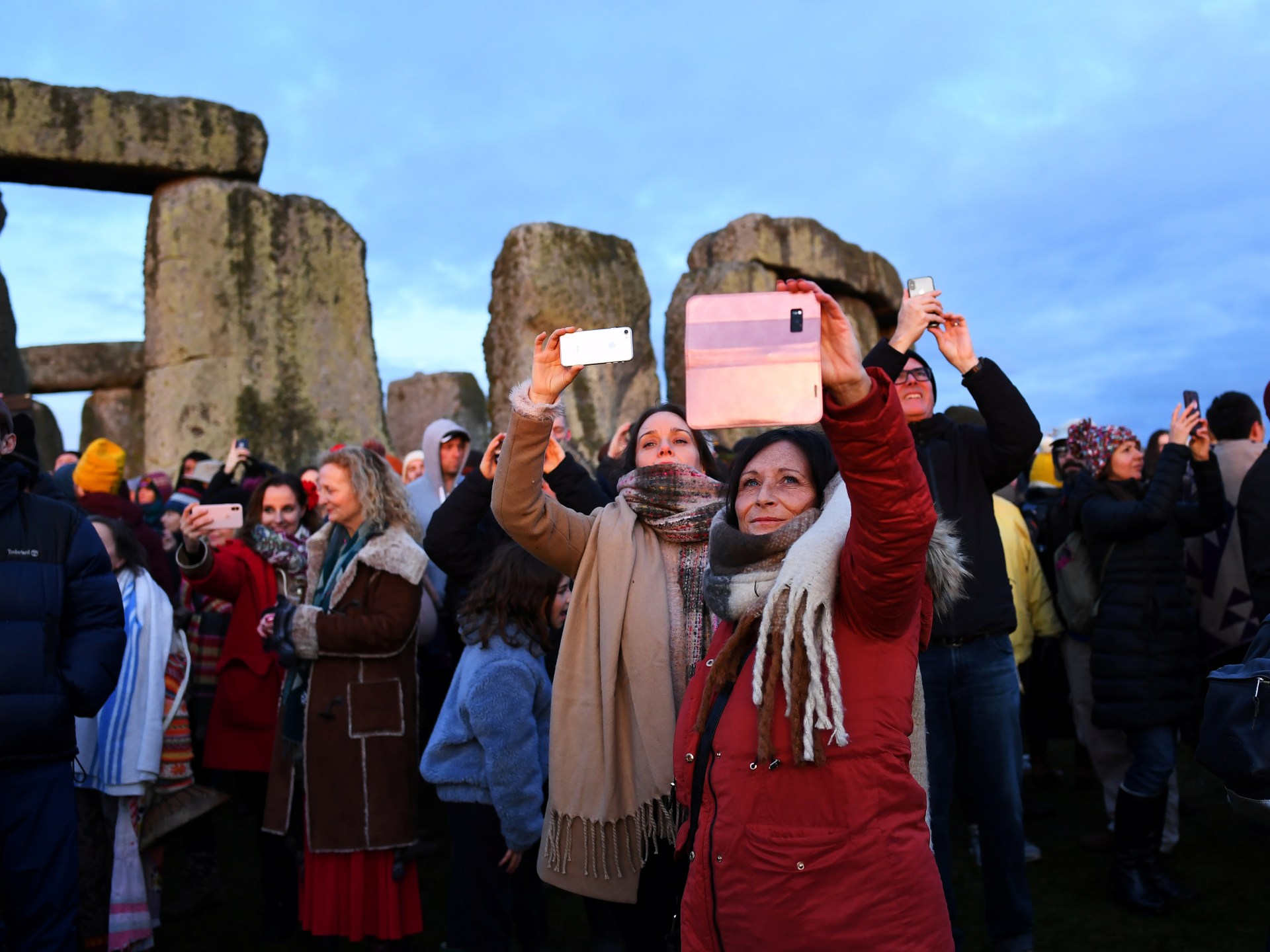Winter solstice 2023 will mark the day with the fewest sunlight hours and coincides with the Ursid meteor shower.
After weeks of dwindling daylight, Friday marks the longest night of the year and the day with the fewest light of the year. The event is known as winter solstice as it marks the start of winter in the northern hemisphere.
The event will also be a turning point for longer hours of daylight in the northern hemisphere, a phenomenon that has been tied to various cultural and folkloric beliefs in ancient times.
Here’s what to know about the 2023 winter solstice and how it is celebrated in different communities.
What is winter solstice and what happens during it?
December’s winter solstice is when the northern half of the Earth is tilted furthest away from the sun, making it the “astronomical” first day of winter.
The northern hemisphere will experience the fewest hours of sunlight, making it the shortest day of the year while the night is the longest.
The duration of daylight will vary across countries. In the United Kingdom’s London, the day is expected to last seven hours and 49 minutes, more than eight hours shorter than the longest day of the year.
The event will also coincide with the peak of the Ursid meteor shower – an annual display that occurs over the northern hemisphere when the Earth passes through debris left by the comet 8P/Tuttle.
Every day after the winter solstice will grow longer in the northern hemisphere until its summer solstice, or the longest day of the year, between June 20 and 22.
Solstice comes from a Latin word translating to “sun stands still”.
When is the winter solstice?
This shortest day of the year will occur on December 22, while the exact moment of the solstice will occur at 03:27 GMT – at this point, the Earth’s axis will be furthest from the sun.
This shift in axial tilts as the Earth orbits around the sun allows the world to experience varying degrees of sunlight on different days. Otherwise, the sun would remain directly above the equator and shed the same amount of light on the Earth throughout the year.

Is it also the summer solstice in the southern hemisphere?
The summer solstice in the southern hemisphere occurs at the same time as the winter solstice in the northern hemisphere.
Seasons of the northern and southern hemispheres are reversed, so countries such as Brazil and New Zealand will be experiencing the longest day of the year.
The winter solstice in the northern hemisphere can occur between December 20 to 23 but often falls on December 21 or 22.
The last time it occurred on December 23 was in 1903, while its next appearance on that date will be in 2303.
Three interesting facts about winter solstice
- Although the solstice is said to mark the astronomical start of winter, the winter season or its meteorological first day occurs on a different date and is based on temperature records.
- Standing outside at noon on December 22 will cast the longest shadow of the entire year.
- At the moment of the winter solstice, the sun appears directly over the Tropic of Capricorn, which is located 23 degrees south of the equator.
What is winter solstice celebrated for?
Several cultures celebrate the winter solstice in different ways which tends to be rooted in almost supernatural or folkloric significance of the day in ancient times. Today, we understand the event in more scientific terms but people continue to enjoy old traditions.
For ancient people, the gradual increase in daylight hours after winter solstice marked a time of rebirth.
People in Denmark, Norway, and Sweden hold a multiday feast to celebrate Juul, or Yule, when ancient people would welcome the return of the Sun God. Scandinavians burn a Yule log to honour the God Thor, who was tasked with returning the sun’s warmth.
In Finnish myth, the waning daylight in the lead-up to the winter solstice is caused by a powerful and evil witch that holds the sun and the moon captive inside a mountain.
For people in Iran, winter solstice or the “Yalda festival” marks the day when Mithra, an angel of light, was thought to have been born.
In China, winter solstice is the “Dongzhi festival” when winter’s darkness begins to give way to light. Families eat special foods such as rice balls called tang yuan.
In the United Kingdom, people visit Stonehenge to catch the rays of the sunrise as they fall between the stones.
Sumber: www.aljazeera.com
 Skip to content
Skip to content

